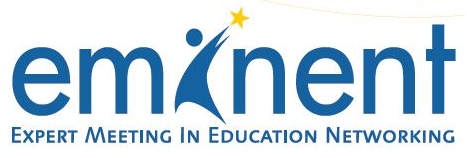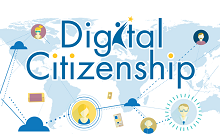Entre los días 17 y 18 de noviembre se ha celebrado en Praga el Expert Meeting in Education Networking (Eminent 2016), que en esta ocasión ha tenido como eje temático la ciudadanía digital.
Este encuentro educativo de carácter anual ha reunido a expertos, representantes de Ministerios de Educación Europeos, y empresas del sector, para intercambiar experiencias y debatir en torno a cómo mejorar la competencia digital de docentes y estudiantes, buscar modelos comunes para potenciar hábitos de uso seguro de la red, desarrollar buenas prácticas de ciudadanía digital y ver formas de colaboración que, en formato de proyectos europeos líderes en esta materia, apoyan la construcción y el desarrollo de una Europa global y conectada, con ciudadanos europeos digitales.

En esta ocasión, el Ministerio de Educación, Cultura y Deporte del Gobierno de España ha estado representado por el Instituto Nacional de Tecnologías Educativas y Formación del Profesorado, que ha presentado el proyecto “Portfolio de la Competencia Digital Docente” en el que trabaja intensamente desde hace unos meses, como parte del “Plan de Cultura Digital en la Escuela”, y que va acompañado de la redacción de un Marco de Competencia Digital Docente que define dicha competencia en 5 Áreas, 21 Competencias y 6 Niveles Competenciales.
A continuación compartimos el slideshow de apoyo a la intervención de INTEF en el encuentro, así como una transcripción de la misma, diapositiva a diapositiva (en inglés):
The first draft was published in February 2013, and distributed for debate, after which the second draft was produced in June. Both were based on the European framework of digital competence for citizens.
The project came to a halt until 2016, when the framework was translated into English, the descriptors of the framework started being developed, the levels of competence defined, and the portfolio designed. Once again the workgroup met and contributed to these advances I am sharing with you now.
The portfolio is a beta version now, bilingual Spanish-English, and by the end of next week we are distributing access to it for a limited period of time, for validation and feedback. So, if anybody is interested in having a say, you are welcome to ask for access and I will be more than happy to provide you with both the access details and the validation survey, which also includes the latest version of our updated framework of digital competence for teachers with the levels of competence and the descriptors for each competence within the 5 areas: information, communicstion, content creation, safety and problem solving.
The portfolio is divided into 3 main sections: biography, dossier and passport.
The biography is the section including the self assessment tool, which is the core of the portfolio. Besides, it shows a timeline for teachers’ experiences regarding digital pedagogy, communication and the other areas of the Mentep project, inspired by Spain’s partnertship in this European project.
Slide 5
The timeline records the teachers history of digital competence in chronological order. It can be updated any time and will show the latest date.
Slide 6
This is the most important part of the portfolio as it guides teachers to be aware of their level of competence, self assessing themselves, reflecting on what they have acomplished and what they have ahead.
We have defined 3 overall levels: A, B and C, with 2 sublevels: A1 and A2; B1 and B2; C1 and C2.
Depending on how many descriptors a teacher checks, they will reach one level of competence or other, and they will be able to update it as they improve.
Of course, in order for digital competence to be acknowlegded and certified to teachers, self assessment is not enough and that is why there is a dossier, an evidence folder where to place proof that the levels you have said you have, can be contrasted. Here teachers can upload badges, projects, own created resources, publications, school work and so forth.This section is also important since, connected with the self assessment tool, is what yields the passport of digital competence.
The passport is the result of the previous sections; it shows your current level of digital competence, together with the evidence that showcases that level, as well as the descriptors one has checked in order to accomplish it. IT will automatically change as improvement is achieved by the users.
It is printable, sharable at social networks, and open to validation by the various educational administrations.
Privacy is decided by the users. You can make it totally public, partially public; for instance, just for your ecucational administration, or absolutely private.
We have also connected it technologocially speaking with our own open badge backpack, also developed at INTEF, just like the portfolio, so that we can acknowledge teachers’ digital competence with badges as well.Slide 10
What might be most interesting, apart from certifying digital competence for teachers, of course, is that the portfolio offers an improvement roadmap to the teacher according to the level accomplished so that they can go ahead and keep up overcoming levels. This roadmap is mainly based on online training actions at the moment but other initiatives are welcome and under study.
Slide 11
Last but not least, just a friendly reminder of the importance of continuous update for a service like this, both on the users’ end and on our end, as a Ministry.
Slide 12
Thank you very much for your attention!
Intervención de Mª Jesús García San Martín.


















